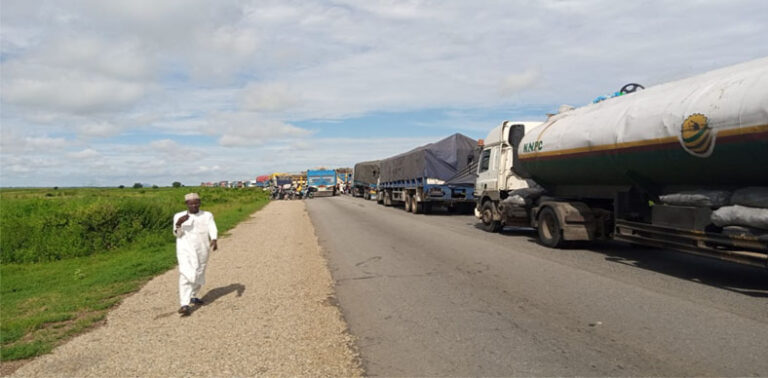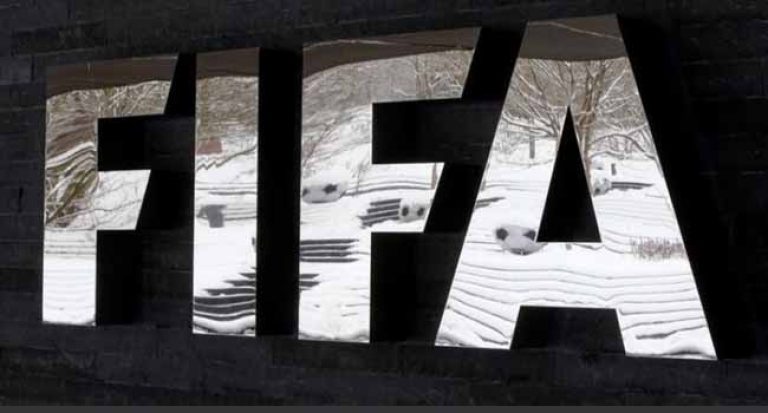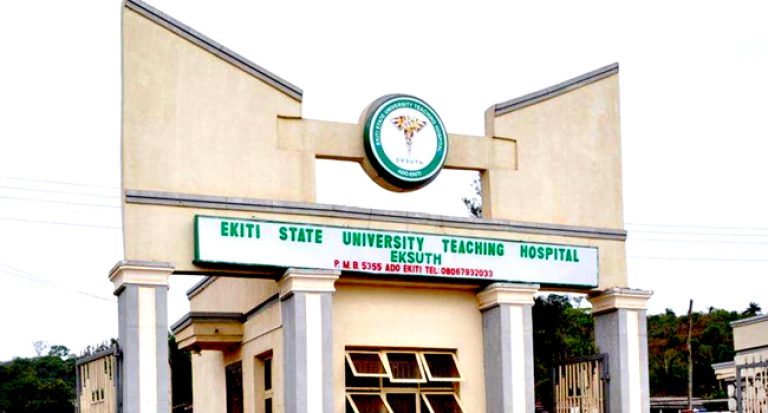The almajiri system of education is predominantly practised in northern Nigeria and has remained a source of concern for those who mean well for the region.
Most of the pupils called almajiri are young children between the ages of 5 and 17 sent out of their homes by their parents in search of Islamic knowledge.
However, ample studies have shown that rather than acquire the knowledge of the Qur’an and jurisprudence, most of the pupils who later transform into adults while rooming the streets rarely acquire the requisite knowledge worthy enough to make them useful to themselves and the society.
Experts believe that although the system worked several decades ago, it is now a breeding ground for delinquent children and an escapist tool for lazy parents, who don’t want to take responsibility of their children.
Governors of the northern states are also being accused of being indifferent about the plight of the young almajirai who, to a greater extent, are now recruitment harbour for men of the underworld.
For decades, meetings, policies and ‘punitive’ measures put in place at the local and state levels rarely made any difference in addressing the menace as parents keep sending their children through some clerics.
In most cases, the children cater for their needs in such tsangaya schools or makarantun Allo.
For instance, they beg for alms, food and clothes, and in most instances “feed” their teachers with the morsels they get.
Jonathan’s intervention
It was in the midst of what to do with the increasing number of almajirai that the federal government led by former President Goodluck Jonathan began constructing model tsangaya/almajiri schools across the country as part of the Almajiri Education Programme.
Those in charge of the initiative at the time said it was done to help the almajirci system become more mainstream in basic education.
However, years after Jonathan has gone, experts believe the initiative has flopped because the federal government left the concept to states that were right from the beginning not bothered about resolving the problem around almajirci.
Also, most of the clerics championing the karatun allo were evidently reluctant to key into the initiative, which would have paved the way for the children to learn both Qur’anic and western education under one roof.
Daily Trust Saturday reports that the Jonathan administration spent about N15billion to build no fewer than 157 tsangaya model schools across the northern states, which are now sadly in a poor state due to poor maintenance, funding and acceptability by those they are meant for.
According to a response to a Daily Trust Saturday enquiry from the Universal Basic Education Commission (UBEC) on April 4, 2022, the commission constructed, equipped and handed over the 157 model almajiri schools to states.
It showed that Gombe State, for instance, has at least five of such schools, Katsina 10, Kano 12 and Niger 10.
However, an investigation by our reporter found that most of the schools are in bad shape, even as many of them are struggling to remain afloat.
Learning infrastructures in the schools are fast deteriorating at a time when the menace of out-of-school children is on the rise.
The Minister of State for Education, Chukwuemeka Nwajiuba, said last year that Nigeria had the highest number of out-of-school children in sub-Saharan Africa, putting the estimated figure at 10.1million children.
The figure grew by 400,000, according to a report by the United Nations Children’s Fund (UNICEF) on January 24, 2022, released to mark the International Day of Education.
The report, issued by the communication specialist at the UNICEF, Nigeria, Geoffrey Njoku, stated, “At least 10.5million children are out of school in Nigeria – the highest rate in the world. A full one-third of Nigerian children are not in school; and one in five out-of-school children in the world is Nigerian.”
These children who are of school age, according to the Compulsory Free Universal Basic Education Act of 2004, have the right to be educated.
It stipulates that these children must attend a six-year primary school and another three years for junior secondary education. It was the Act that established the UBEC, the State Universal Basic Education Board (SUBEB) and the Local Government Education Authority (LGEA).
More so, the revelation on the condition of the tsangaya schools, which are meant to bridge the gap, indicates a huge delay in the transition of the initiative.
Findings revealed that it was only in 2021 that the President Muhammadu Buhari-led administration moved to modify the strategy, according to disclosures by the Presidential Steering Committee on Alternate School Programmes.
The UBEC has a specialised department called the Department of Tsangaya (Almajiri) Education Programme to address the problems of out-of-school children, especially on basic education.
Although the UBEC stated on its website that the almajiri schools were handed over to respective Universal Basic Education Boards (SUBEBs) in states, some chief functions of the UBEC, according to its mandate, inspired this report.
The UBEC has the mandate to coordinate the activities of SUBEBs that are related to the Tsangaya Education Programme; and it is vested with the mandate to collect, collate and report the status of tsangaya model schools to the UBEC management.
Only one teacher in Daura tsangaya
Although the structures at the Daura Almajiri Model School in Katsina State are still being utilised for the tsangaya and a section for Islamiyya, other facilities are no longer available.
According to observations, the dormitory where the almajirai sleep has only bunk beds without mattresses or blankets for the pupils to use.
There are only scanty mats and mosquito nets in the dormitory of the school, originally meant to be a boarding house.
Some of the pupils said the chairs were taken to the Islamiyya section, which was not part of the school design, leaving the almajirai in the tsangaya section to sit on the floor.
However, some of the almajirai said they were happy being in the school as they felt they were better than their counterparts roaming the streets.
Malam Isah Musa, an assistant teacher who has spent six years in the school, said he was made an assistant teacher after he became the most senior almajiri (or pupil) in the school.
“In terms of feeding, those of us who have means of income cater for themselves, while the younger ones beg for food like any other almajiri,” he said.
He appealed to the government to assist them with blankets and mats for the over 70 pupils in the school.
The pupils, on their part, asked for more teachers, as findings revealed that there is only one teacher in the school, called Malam Sulaiman Umar.
Speaking on how they are faring, Malam Umar said they were trying to manage what they had and dismissed rumours of a school feeding programme in place.
“The only time we came close to that was when some huge cooking pots and other utensils were brought, just like in conventional boarding schools. I was not there when they brought and offloaded them in my office, and I was not there also when they took them away,” he said.
Umar lamented that his N5, 000 monthly allowance would not come regularly, even as it had been slashed to N2,500 by the authorities.
Teething problems in Gombe
In Gombe town, where there is the Sheikh Muhammadu Almajiri Memorial School around the Malam Inna area, the pupils are left to feed themselves; and they don’t have enough space to sleep despite the school being designated as boarding.
The school, established in 2013, has two-block classrooms, two hostel blocks, two staff rooms, a headmaster’s office, a kitchen, a dining hall and a borehole.
Daily Trust Saturday observed that there are two cleaners, security personnel and three cooks.
There are about 20 N-Power volunteers, two LEA permanent teachers and other volunteers in the school.
The school headmaster, Malam Zakariya’u Muhammad Basakkwace said when the government handed over the school to their father, the late Malam Muhammadu Basakkwace, there was a pledge that it would be providing foodstuff and other essential materials for its effective running.
He added that cooking utensils were provided and three female cooks were employed, but for the past seven years, they have never cooked anything there as the cooking utensils rust in the store.
And since it is a boarding school, the head teacher said parents had been left with the responsibility of providing food and the upkeep for their children.
On the facilities, he said the hostel block and the classrooms were also becoming inadequate for the pupils, whose age bracket is between six and 13 years.
“The initial two blocks of classrooms meant for 50 pupils now accommodate about 480 pupils, with some of them taking lessons under a tree,” he said.
Findings revealed that the N1,000 termly levy for running the school is also discouraging some parents from enrolling their children.
“It is a challenge as most parents are reluctant to pay the fees,” Basakkwace said, adding that he is trying to expand the school to enroll children of neighbours.
Malam Idris Muhammad, a teacher in the school, said they were the best despite the poor welfare and inadequate attention from the government.
“We have students from all the six North East states, and others from as far as Sokoto, Katsina and Kano,” he said.
A 17-year-old Rabilu Mukhtari said his father enrolled him in the school because of the combination of Islamic and western education.
Mukhtari praised the teachers for their dedication but decried lack of feeding.
For Salim Habibu, a 15-year-old boy from Mubi in Adamawa State, apart from the lack of feeding, the congestion and poor hygiene in the toilets are a source of concern.
“While the hostel is not enough for our large number, feeding is a major challenge. At times we eat food once a day, and the school has banned us from going out to beg or search for food,” he said.
Muhammad Bello, 16, said he had already completed the Qur’an recitation within four years of his enrolment and had started memorization, which he hopes to conclude within the next two years.
In Niger, community converts tsangaya into western school
In Niger State, there are about seven integrated basic Qur’anic education centres located in Suleja, Mokwa, Kontagora, Bida, Gurbin-Boka, Zarumai and around 123 quarters in Minna, the state capital.
Malam Hudu Danjuma, who is the coordinator of education quality assurance in charge of the Suleja zone, said most of the almajiri schools had become a shadow of themselves due to lack of acceptance by the original teachers who blocked pupils from enrolling in the schools when they took off.
“There were quarters built for the teachers, but they refused to relocate,” he said.
At the Suleja Almajiri Model Centre, Daily Trust Saturday observed that the pupils have vacated the school as members of a nearby community adopted it as a primary school for their wards.
Malam Abubakar Yahaya, the centre’s head teacher near Pangamu community in Suleja town, said it was commissioned in May 2014 and was integrated as one of those almajiri schools of the federal government.
Yahaya said the centre initially had 80 pupils but the figure rose to 193.
A visit to the school showed that although there are six dormitories, it does not operate as a boarding facility due to a lack of beds and mattresses since it took off.
In the classrooms, there are not enough desks; hence mats have become the alternative.
A level three pupil, Abdulkadir Abdullahi, said his interest in the school stemmed from its dual learning system – Islamic and western education.
And for Sulaiman Ahmad, another pupil, the school feeding (morning and afternoon) is a good attraction that must be sustained by the community.
Daily Trust Saturday learnt of a World Bank-assisted education programme for the tsangaya schools in the state. The programme is called Better Education Service Delivery for All (BESDA) and was launched in November 2019.
The head of Social Mobilisation in Local Education Authority, Suleja Council, Malam Ishaq Ibrahim, said teachers employed by the state in conventional schools go to the 14 tsangaya schools within Suleja town to give two-hour lessons to the pupils on Thursdays and Fridays on N10, 000 monthly allowance.
A day with tsangaya pupils in Kano
The Model Day Tsangaya Primary School in Bichi town in Kano State has over 200 pupils. The school’s signpost indicates that it is a boarding school, but the reverse is the case.
The school is said to be under the care of the Kano State Qur’anic and Islamiyya Schools Management Board.
A teacher in the school who gave his name as Yusuf said the system allowed the pupils to study conventional western education from morning to noon, then study Qur’an from noon to evening between Monday and Friday.
Another teacher called Musa said teachers’ welfare was fair, just as their counterparts in other public schools in the state.
Murtala Amadu Kabagiwa, a 12-year pupil, said he dreaded Saturdays and Sundays because there won’t be classes; hence no feeding.
“We eat rice and beans to our satisfaction during school days. We play with our friends and study. I hate Saturdays and Sundays because it means no school for us and no rice and beans,” he said.
Another pupil, Musa Jafaru, who said he was 14 years old, said he was initially taken to Katsina for Qur’anic studies but was brought back to Bichi and enrolled in the school.
“I don’t go out to beg for food here. And I stay with my parents, that is why I prefer here to the school in Katsina. No one calls me almajiri here.”
A resident, Malam Adamu Abdullahi, said if not for the school, the children would have been elsewhere roaming the streets, begging.
Good policy, faulty implementation – Experts
Malam Muhammad Ishaq, a tsangaya school teacher in Maiduguri, Borno State, said the modernised concept could not be accepted by many clerics because they were not carried along from the beginning.
“There was serious mutual suspicion at the beginning because some of the tsangaya teachers believed their pupils would be taken away from them.
“Another problem is that some of the teachers have a different perception about moving into formal-like schools. They prefer to set bonfires at night while the children sit around it.
“I know the concept would have sailed through had it been the government got the support to the clerics in their domains,” he said.
An educationist, Mr John Ejeh, said the almajiri school system was a well thought out system, but lamented that it was being driven by a faulty implementation strategy.
He said, “It is not just about the UBEC building structures, it should have been about sustaining the system; I don’t think that was done.
“You are trying to promote education and tackle the prevalence of street children and you just built schools to give to states who do not demonstrate any commitment to this. How do you think this will ever work?” Eje wondered.
Other experts argued that the federal government could have made the almajiri or tsangaya school system part of the unity schools nationwide to make them sustainable.
Another educationist in Abuja, Mr Thomas Okon, said, “You can hardly hear of this perennial complaint of negligence across the over 100 unity schools because there is a full-scale budget by the Federal Ministry of Education.
“If they were sincere right from the start, they should have included the running of the school in the national budget, just like the unity schools,” he said.
On what the UBEC should do, the experts said the commission should fully take over the schools.
UBEC blames states, starts new strategy
When contacted, the programme coordinator, Integrated Qur’anic Tsangaya Education (IQTE) at the UBEC, Malam Ibrahim Yusuf, insisted that the provision of basic education was the responsibility of states and local governments, noting that the federal government, through the UBEC, was only assisting the states and local governments with such interventions.
Yusuf, who spoke on behalf of the executive secretary of the UBEC, Dr Hamid Bobboyi, explained that the commission had a pact with the states, saying the states were expected to deploy both teaching and non-teaching staff, enrolment of learners, maintain the schools, among others.
“It was, however, discovered that the states did not only default on the provisions of the memorandum of understanding, some of them converted the schools to other uses, while others did not put them to use at all.
“The commission responded to these developments by changing its strategies for intervening in the education of almajiri children,” he said.
Yusuf further disclosed that there was a new strategy for IQTE intervention with proprietors (alarammomi) engaged to plan and implement the programme.
“I am glad to inform you that this new approach is yielding the desired objectives,” he noted.
Confirming the problems of poor facilities, poor welfare and other issues observed during this paper’s investigation, the UBEC official said the new strategy ensured that the proprietors of almajiri schools would build two classrooms and rehabilitate existing ones while the UBEC trains the proprietors and provides instructional materials and public enlightenment on the schools across communities.
“The teachers are to be provided by SUBEBS while UBEC assists the centres through the Federal Teachers’ Scheme (FTS) funded by Sustainable Development Goals (SDGs),” he said.
He also said the strategy “addresses the feeding problems of the almajirai, which we hope the states would do a lot to help in this case” as well as skills development (vocational) training for older pupils. Some of the tsangaya centres will get agricultural projects assistance so that they can farm and provide food for the pupils. (Daily Trust)







